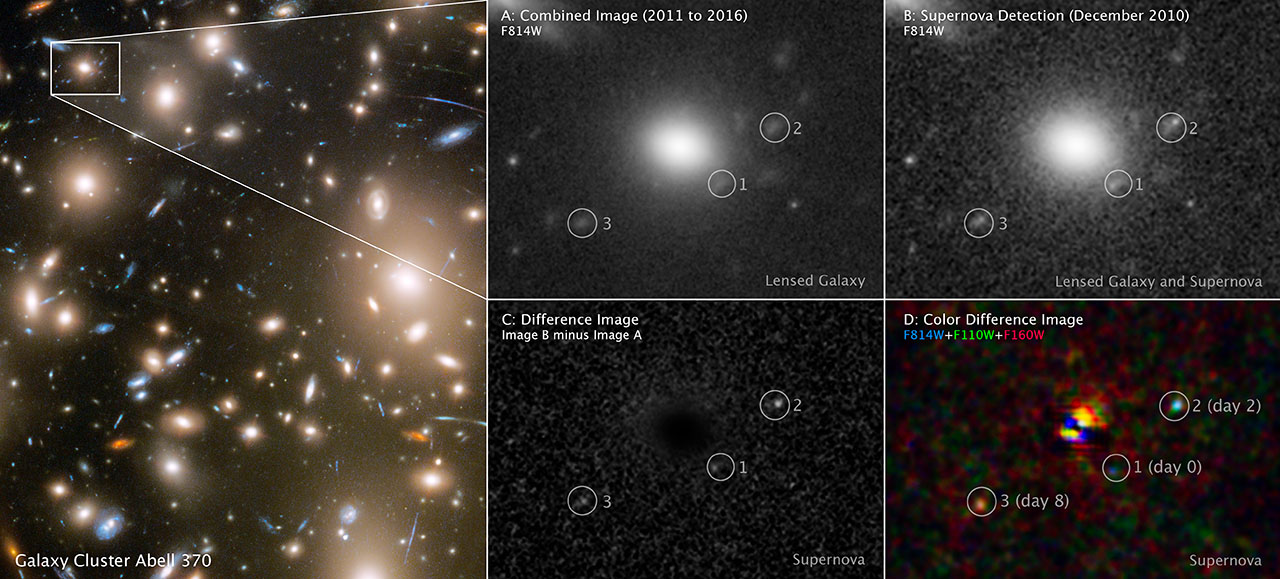STScI: Hubble Captures 3 Faces of Evolving Supernova in Early Universe

Three different moments in a far-off supernova explosion were captured in a single snapshot by NASA’s Hubble Space Telescope. The star exploded more than 11 billion years ago, when the universe was less than a fifth of its current age of 13.8 billion years.
This is the first detailed look at a supernova so early in the universe’s history. The research could help scientists learn more about the formation of stars and galaxies in the early universe. The supernova images are also special because they show the early stages of a stellar explosion.
“It is quite rare that a supernova can be detected at a very early stage, because that stage is really short,” explained Wenlei Chen, first author of the paper and a postdoctoral researcher in the University of Minnesota School of Physics and Astronomy. “It only lasts for hours to a few days, and it can be easily missed even for a nearby detection. In the same exposure, we are able to see a sequence of the images—like multiple faces of a supernova.”
This was possible through a phenomenon called gravitational lensing, which was first predicted in Einstein’s theory of general relativity. In this case, the immense gravity of the galaxy cluster Abell 370 acted as a cosmic lens, bending and magnifying the light from the more distant supernova located behind the cluster.
The warping also produced multiple images of the explosion over different time periods that all arrived at Earth at the same time and were caught in one Hubble image. That was possible only because the magnified images took different routes through the cluster due both to differences in the length of the pathways the supernova light followed, and to the slowing of time and curvature of space due to gravity.
The Hubble exposure also captured the fading supernova’s rapid change of color, which indicates temperature change. The bluer the color means the hotter the supernova is. The earliest phase captured appears blue. As the supernova cooled its light turned redder.
“You see different colors in the three different images,” said Patrick Kelly, study leader and an assistant professor in the University of Minnesota’s School of Physics and Astronomy. “You’ve got the massive star, the core collapses, it produces a shock, it heats up, and then you’re seeing it cool over a week. I think that’s probably one of the most amazing things I’ve ever seen!”
This is also the first time astronomers were able to measure the size of a dying star in the early universe. This was based on the supernova’s brightness and rate of cooling, both of which depend on the size of the progenitor star. Hubble observations show that the red supergiant whose supernova explosion the researchers discovered was about 500 times larger than the Sun.
